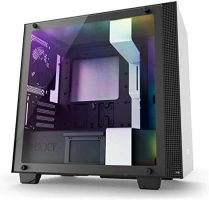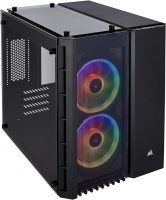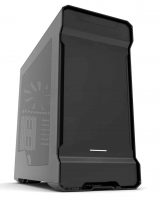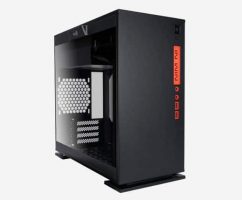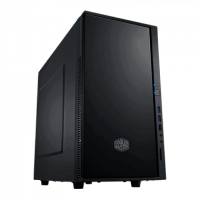Best Micro ATX Case 2021: Top mATX Gaming and Water Cooling Picks
- Last Updated Jun 23, 2021
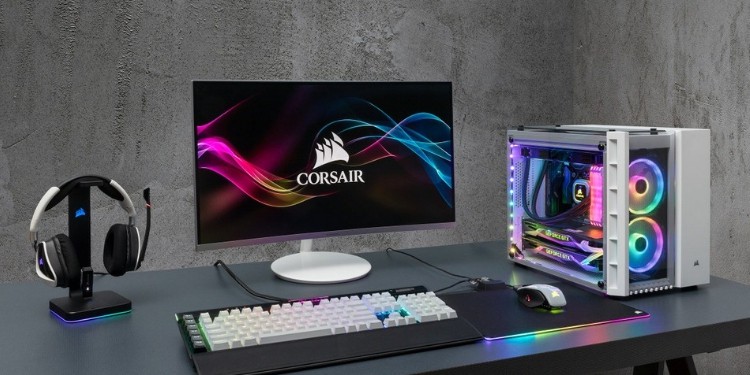
There are a lot of PC case form factors out there. Not enough to be blown away, but just enough to make you scratch your head. Amongst the ranks of PC cases, there are small form factor cases, some being smaller than others. The micro ATX fits into this particular niche.
While mATX cases aren’t the smallest out there, they offer a balanced blend of performance and size, taking up significantly less desk space than a mid-tower, but offering much greater performance and more expansion slots than an mITX. Many would argue that this makes mITX cases the best of both worlds.
Knowing this, we’ve set out to find the best of the best in this balanced category of cases (try saying that 5 times fast!). We rounded up our top ten picks and included a buyer’s guide below to help you find the best micro ATX case for your needs.
Products at a Glance
Best Micro ATX Case 2021: Top mATX Gaming and Water Cooling Picks
Excellent cable management
Built in RGB controller and fan hub
Only one 3.5” bay
Near the top of any case roundup is almost guaranteed to be a case from amongst NZXT’s H-series lineup. This flagship line offers some of the most meticulously designed cases on the market today that have a variety of user-friendly features that make them easy to build in and great for tons of different builds.
For our focus today, we’re going to the looking at the H400i, the microATX case of the H-series lineup. This case comes with NZXT’s excellent cable management channel design as well as an all-steel construction that makes it one of the most durable (and also heaviest) cases on our list.
There is a tempered glass side panel on one side of the case, while the other side behind the motherboard tray has a plain side panel. All of the “i-series” cases within the NZXT lineup come with some added built-in functionality. The H400i comes with three Aer 120mm fans in addition to a built-in RGB and fan controller that can control the included RGB strip through NZXT’s HUE+ software.
The simple layout inside this case makes it suitable for almost any build. It can accommodate graphics cards up to 411mm in length and CPU coolers up to 164mm in height. It can also fit some simple AIOs and water cooling, but only up to 120mm radiators.
Tons of water cooling options
Lots of tempered glass
Inconvenient dust covers
Water cooling is hands down the best way to get the most out of your hardware. The lower temperatures will offer both a greater lifespan and superior performance, especially if you have an interest in overclocking.
The rewards of water cooling are even great with a smaller form factor micro PC case. In smaller cases, the air inside the case gets much hotter which decreases the performance of air coolers and heatsinks, but a water cooler will be able to cool efficiently, even in a smaller space.
When it comes to water cooling in a micro computer case, nothing can come close to the Crystal 280X from Corsair. You can cram up to three large 240mm radiators into this case, or up to six 140mm radiators. With this much cooling capacity pretty much nothing is out of reach in terms of performance.
On top of this, it also looks great with tempered glass on the front, top, and side. The 280X also comes with a pair of very nice 120mm RGB fans from Corsair and a lighting node pro to control the RGB lighting.
Lots of drive bays
Tons of options for fans
Very heavy
For those looking for a highly modular case that allows for a huge variety of different layouts, then the Phanteks Enthoo Evolv is our strong recommendation. This case sports tons of options when it comes to layout, fans, drive bays, and even radiators.
For starters, there are tons of drive bays in this case for its size, flaunting three 3.5” bays, an impressive five 2.5” bays, and even a 5.25” bay for a CD reader in the front. If the 5.25” bay is moved out of the way, however, you can fit a massive 200mm fan in the front instead for tons of cooling.
For even more cooling you can also fit up to two 120mm fans or two 140mm fans in the top as well as the front of the case, plus another in the rear of the case. Alternatively, you can outfit the case with a 240mm radiator in the top and front, plus a 140mm radiator in the back. This layout, however, would require you to sacrifice quite a few of the drive bays.
Pretty affordable
Good looking
Impressive cooling options
Few drive bays
InWin is a Chinese manufacturer that has drawn a lot of attention in recent years by producing a variety of cases and products that offer a blend of great value with appealing and practical design. The InWin 301 is no exception to this trend and represents one of the best values on our list because of it.
For starters, while looks are subjective, we like this case’s modern aesthetic and the illuminated I/O and honeycomb mesh panels look sleek. The large tempered glass side panel can be opened up and remove without any tools, making this a great case for those who are often tinkering around or opening up their case.
Also, despite being the smallest micro ATX case on our list, the InWIn 301 can still fit up to a 240mm radiator at the front and a 120mm in the rear. This case also has a pretty unique overall layout with the power supply being mounted at the top and the option to have additional fans in the bottom that block one of the PCIe slots.
Noise reducing insulation
Lots of drive bays
No side panel window
In some cases such as an entertainment center PC, the computer needs to not only be tiny so it will fit into a media center, but should also be as quiet as possible so it does not disturb the viewing experience. If this is the kind of case you’re looking for, then the Cooler Master Silencio 352 is likely the best case on the market for you.
The Silencio 352 has a number of features that make it easily the quietest small uATX case we’ve seen to date. For starters, it uses sound dampening foam in strategic spots around the side panels that absorb and redirect noise inside the case.
The case also has several air filters to help keep dust out of the case. Oh, and it has a removable top cover. Keeping the cover on serves to suppress as much noise inside of the case as possible. Taking it off, however, offers more airflow for better cooling at the cost of slightly more noise escaping from the sound dampening case.
